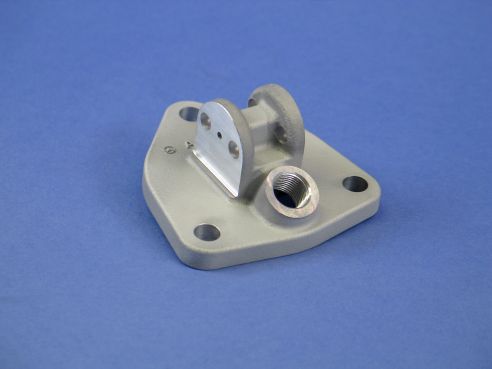

Two years ago, Premium AEROTEC, EOS and Daimler launched the NextGenAM projectwhich aims to develop a digitalised next-generation manufacturing line which would be able to produce aluminium components for the automotive and aerospace sectors.
So far, the three companies seem satisfy with the advancement of the project. Areas for improvements include autonomous manufacturing, quality management, replacement parts for trucks and buses as well as opportunities for smallest series and advance development.
Autonomous manufacturing
The entire production process runs itself, without operating personnel, from a central, autonomous control center. Fundamental to the system is the way all the machines used are networked. The build job data are transmitted to the control center, which then prioritises the various build requests and allocates them to an AM system. During the build process, the manufacturing status can also be retrieved on a mobile device, independent of location. Once the full production chain has been completed, the quality reports are sent back centrally to the control center. All the data necessary for the production of a digital “twin” can be accessed here, so allowing complete traceability, amongst other things.
Quality management, its key role in a continuous 3D data string
Once quality management is integrated in the continuous 3D data string, it becomes possible to scale the manufacturing process: the production lines can simply be duplicated to extend the capacity of the plant. This brings the promise of further substantial savings in the future as the numbers rise. Today, the pilot facility is today already capable of the automated manufacturing of components to series-production quality standards.
Opportunities for smallest series & product quality
“Additive Manufacturing is also suitable for smallest-series production of new vehicles (limited editions). Systematic development of the parts specifically for 3D printing means that the production costs can be further reduced and the quality optimised“, according to Jasmin Eichler, Head of Future Technologies at Daimler AG. “3D printing also makes particular sense during the advance development of vehicles. The low numbers required can often be produced more cost-effectively, and faster, with Additive Manufacturing than with conventional production processes.”
Lastly, speaking of product quality, it should be noted that high product quality comes as standard in the pilot facility: there is also provision for the use of a high-strength aluminium/magnesium/scandium alloy (also known as Scalmalloy®) for parts used in the aviation and aerospace sectors.
For the automotive sector a classic aluminium alloy (AlSi10Mg) is used, the material properties of which have been continually improved over the course of the pilot project. The material strength and finish quality, amongst other factors, have been significantly improved compared with two years ago when the cooperation started.
For further information about 3D Printing, follow us on our social networks and subscribe to our newsletter
– Would you like to subscribe to 3D Adept Mag? Would you like to be featured in the next issue of our digital magazine? Send us an email at contact@3dadept.com
//pagead2.googlesyndication.com/pagead/js/adsbygoogle.js (adsbygoogle = window.adsbygoogle || []).push({});




